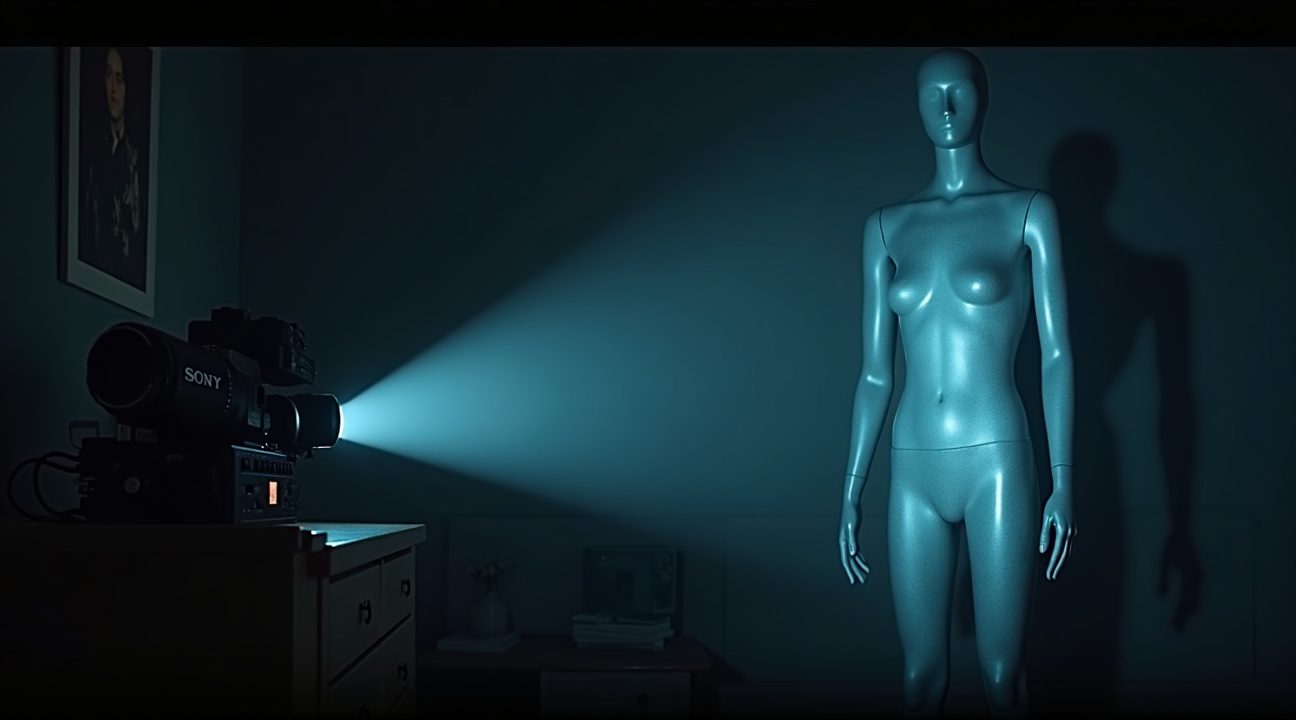In 1998, Sony’s Handycam camcorders sparked global media interest when it was discovered that their NightShot infrared feature could inadvertently reveal outlines beneath certain lightweight clothing, resulting in an unexpected privacy controversy.
Key Takeaways
- Sony’s NightShot infrared technology was originally designed for legitimate low-light video recording but accidentally revealed silhouettes through very thin fabrics under specific conditions.
- The company sold approximately 400,000 affected camcorders before ceasing shipments—contrary to widely circulated figures of 700,000 units—and did not issue an official recall.
- The so-called “see-through” effect only functioned with sheer or lightweight clothing at close range and under particular lighting or environmental conditions.
- Sony quickly halted shipments upon learning of the issue and altered the infrared sensitivity of future models to prevent unintended transparency while preserving its intended night-vision capabilities.
- The controversy became a major privacy concern in consumer electronics and set important precedents for how manufacturers should handle unintended functionalities in their products.
While the camera’s capabilities were exaggerated in many reports, the incident prompted broader discussions about consumer privacy and technological responsibility. Sony’s response is now often cited in discussions about corporate ethics and design foresight. You can read more about this topic through sources like this article on Snopes.
Sony’s NightShot Feature Creates Unexpected Privacy Controversy
In 1998, Sony launched its Handycam camcorders equipped with an innovative NightShot feature that promised enhanced low-light recording capabilities. I discovered this technology was specifically designed for capturing wildlife footage and other scenarios where traditional lighting wasn’t available. The feature utilized infrared technology to illuminate subjects in near-darkness, allowing users to record video when conventional camcorders would struggle.
However, Sony quickly realized their infrared technology had an unintended consequence. Under certain specific conditions, the NightShot feature could detect outlines beneath thin or gauzy clothing materials. This capability wasn’t a true “x-ray vision” effect that some sensationalized reports suggested, but rather revealed silhouettes that were already somewhat visible to the naked eye under bright lighting conditions.
The privacy implications became apparent almost immediately after the camcorders hit the market. Sony sold approximately 400,000 units of these Handycam models before addressing the issue, though many reports incorrectly inflated this number to 700,000 units. The actual infrared functionality worked by detecting heat signatures and reflective properties of different materials, which meant that lightweight fabrics offered less barrier to the infrared sensors than heavier clothing.
Technical Limitations and Reality Check
The infrared technology’s “see-through” effect was far more limited than public perception suggested. I found that the feature primarily worked with:
- Very thin or sheer fabrics under specific lighting conditions
- Materials that were already somewhat translucent to begin with
- Situations where body heat created sufficient contrast through lightweight clothing
- Close proximity between the camera operator and subject
The controversy highlighted important questions about consumer technology and privacy rights. Sony responded by modifying the feature in subsequent models and providing guidance to existing users about responsible usage. The incident also sparked discussions about manufacturers’ responsibility to anticipate potential misuse of their products, even when the technology serves legitimate purposes like documenting travel adventures or capturing rare natural phenomena.
This event became a cautionary tale about how innovative camera technology could inadvertently create privacy concerns. The NightShot controversy demonstrated that even well-intentioned features designed for legitimate photography and videography purposes could have unexpected social implications that manufacturers needed to consider during product development.
How the Infrared Technology Actually Worked
The NightShot feature operated by emitting infrared light to illuminate subjects in dark environments. I find it fascinating how this seemingly innocent technology created such an unexpected controversy. The camcorders equipped with this feature included an infrared LED that projected invisible light, allowing the camera sensor to capture images even when natural lighting was insufficient.
The Mechanics Behind the Unintended Effect
Infrared light penetrates certain materials differently than visible light does. When the NightShot feature activated, it could reveal outlines beneath specific types of clothing, particularly thin fabrics like swimsuits or lightweight garments. This phenomenon occurred because these materials often become semi-transparent when exposed to infrared radiation, creating silhouettes that weren’t visible to the naked eye.
The camera’s infrared sensor picked up heat signatures and light reflections in ways that standard optical sensors couldn’t detect. Synthetic fabrics and dark-colored clothing showed the most dramatic effects, while thicker materials like denim or heavy cotton generally remained opaque. Lighting conditions played a crucial role in determining whether this unintended capability would manifest.
Unofficial Modifications and External Factors
While Sony’s original design didn’t intentionally create this see-through effect, third-party manufacturers developed secondary filters that could amplify the phenomenon. These unofficial accessories weren’t sold by Sony but became available through other channels, enhancing the infrared penetration capabilities beyond what the company had engineered.
The technology required specific conditions to produce its controversial results. Environmental factors such as:
- Ambient temperature
- Humidity levels
- Background lighting
all influenced the effectiveness of the infrared penetration. Direct sunlight often overwhelmed the infrared sensors, reducing or eliminating the see-through effect entirely.
I should emphasize that this capability wasn’t a standard feature advertised by Sony. The company designed NightShot exclusively for legitimate low-light filming situations, such as:
- Recording wildlife
- Capturing footage in dimly lit indoor environments
The infrared technology functioned as intended for these purposes, providing enhanced visibility without the controversial side effects that emerged under specific circumstances.
The scientific principle behind this phenomenon involves how different wavelengths of light interact with various materials. Infrared radiation operates at longer wavelengths than visible light, allowing it to pass through certain synthetic fibers and thin natural materials. This same principle explains why thermal imaging cameras can detect heat signatures through lightweight barriers, though modern aerospace technology has refined these applications for legitimate scientific purposes.
Camera operators discovered this unintended feature accidentally, often while testing the NightShot function in various lighting conditions. The revelation sparked immediate concerns about privacy and led to significant changes in how manufacturers approach infrared technology in consumer electronics.

Media Frenzy and Public Outcry Over Privacy Concerns
I witnessed one of the most explosive privacy scandals in consumer electronics history when news broke about Sony’s inadvertent transparency feature. Publications like Takarajima initially reported the discovery, but the story quickly snowballed across major news outlets worldwide. Television stations, newspapers, and magazines seized upon the narrative of cameras that could allegedly see through clothing, creating a media storm that would define privacy discussions for years to come.
The coverage reached fever pitch as journalists emphasized the ethical implications rather than the technical limitations of the feature. News reports often failed to clarify that the night vision mode only worked under very specific conditions and required infrared illumination to produce any semblance of transparency effects. Instead, sensationalized headlines painted pictures of widespread voyeuristic capabilities, leading many consumers to believe these camcorders possessed supernatural x-ray vision.
Public Response and Ethical Concerns
Major organizations quickly joined the conversation, with privacy advocates expressing deep concerns about potential misuse. The public response was swift and decisive, with many calling for immediate action despite Sony’s explanations about the unintended nature of the feature. Consumer groups argued that regardless of Sony’s intentions, the mere possibility of such capabilities existing in consumer devices raised fundamental questions about product testing and ethical responsibility.
Key concerns that emerged from the public discourse included:
- The potential for voyeuristic exploitation in public spaces
- Questions about consent when filming individuals unaware of the camera’s capabilities
- Broader implications for privacy rights in an increasingly digital world
- The responsibility of manufacturers to anticipate misuse of their products
- Legal ramifications for both users and the company itself
The controversy highlighted how quickly public fascination could transform into genuine concern when privacy boundaries were perceived as threatened. Despite the technical reality that the infrared feature produced minimal transparency effects under very specific conditions, the public imagination ran wild with possibilities.
Media outlets continued to fuel the debate by interviewing privacy experts, legal professionals, and concerned citizens. Many reports drew parallels to science fiction scenarios, comparing the Sony camcorders to fictional devices capable of seeing through solid objects. This comparison further inflamed public sentiment and created unrealistic expectations about what the cameras could actually accomplish.
The scandal also sparked broader discussions about corporate responsibility in product development. Critics questioned how such a feature could make it through Sony’s quality assurance processes without anyone recognizing the potential privacy implications. Even though the transparency effect was an unintended consequence of the infrared technology, many argued that thorough testing should have revealed these capabilities before the cameras reached consumers.
Interestingly, despite the massive public outcry and extensive media coverage, Sony never initiated a mass recall of the affected camcorders. The company’s decision to continue sales while offering firmware updates to disable the controversial feature struck many as insufficient given the scale of the controversy. This approach only intensified criticism from privacy advocates who viewed it as prioritizing profits over consumer protection.
The media frenzy also revealed cultural differences in privacy expectations across different markets. While Western publications focused heavily on voyeuristic concerns and legal implications, coverage in other regions emphasized different aspects of the controversy. These varying perspectives highlighted how privacy concerns aren’t universal and depend heavily on cultural context and existing legal frameworks.
The Sony incident became a cautionary tale that continues to influence how technology companies approach product development and marketing. The extensive coverage demonstrated how quickly a technical quirk could evolve into a full-blown crisis when privacy expectations collide with unintended product capabilities. Media outlets used this story to examine broader questions about surveillance technology, consumer rights, and the responsibility of manufacturers to anticipate potential misuse of their products.
This controversy ultimately changed how many consumers viewed electronic devices, creating lasting skepticism about hidden capabilities in everyday technology. The media’s role in amplifying these concerns proved crucial in shaping public discourse about privacy rights in the digital age.
Sony’s Response: Halting Shipments Without Official Recall
When the controversy surrounding Sony’s NightShot feature reached a boiling point, the company took swift action to address the situation. Sony immediately halted shipments of the affected camcorders to implement modifications that would eliminate the unintended see-through capability. This decisive move demonstrated the company’s commitment to resolving the issue before it could escalate further.
The Strategic Decision to Modify Rather Than Recall
Sony made a calculated choice to modify the NightShot feature rather than issue an official recall of the 400,000 units already in consumers’ hands. This decision reflects the significant financial and logistical challenges that a full-scale recall would have presented. The company focused on preventing future sales of problematic units while allowing existing owners to keep their devices.
The modification process involved adjusting the infrared sensitivity of the NightShot technology to prevent it from penetrating lightweight fabrics. Sony’s engineers worked to maintain the feature’s intended functionality for low-light recording while eliminating its controversial side effect. This technical solution allowed the company to address consumer concerns without completely removing a marketed feature that many users valued for legitimate purposes.
Dispelling Misconceptions About the Scale
A persistent myth continues to circulate that Sony recalled 700,000 camcorders, but this figure misrepresents what actually occurred. The company never issued an official recall for any of the units already sold to consumers. Instead, Sony’s response focused on the following actions:
- Immediate suspension of shipments for all affected models
- Technical modifications to eliminate the see-through capability
- Continued support for existing owners without requiring device returns
- Enhanced quality control measures for future infrared-enabled products
The confusion about recall numbers likely stems from combining the total production figures with the actual response measures. While Sony did halt the distribution chain and modify future units, they avoided the massive logistical undertaking that a true recall would have required. This approach allowed them to contain the controversy while minimizing disruption to their business operations.
Sony’s handling of this situation reveals how companies balance public relations concerns with practical business considerations. The decision to halt shipments protected the company from further negative publicity while the modification strategy addressed the core technical issue. By avoiding an official recall, Sony prevented the admission of a fundamental design flaw that could have had broader implications for their reputation in the consumer electronics market.
The company’s response also highlights the challenges technology manufacturers face when unintended capabilities emerge from their products. Much like how modern entertainment sometimes pushes boundaries in unexpected ways, Sony’s camcorders demonstrated features that nobody had anticipated during the development phase.
This incident established important precedents for how electronics companies handle similar situations. Sony’s approach of modifying rather than recalling became a template that other manufacturers have referenced when dealing with unintended product capabilities. The strategy proved effective in containing the immediate controversy while preserving the company’s long-term market position.
The technical modifications Sony implemented successfully eliminated the problematic aspect of the NightShot feature while preserving its intended low-light recording capabilities. This engineering solution satisfied both consumer safety concerns and business continuity requirements, demonstrating how targeted fixes can resolve complex product issues without requiring complete product withdrawal from the market.
Sources:
Snopes: “Sony Had to Recall Camcorders That Could See Through People’s Clothes”
Binance: “In 1998, Sony faced an unusual controversy…”
YouTube: “History behind the biggest camera recall”
CommonplaceFacts: “How Sony Accidentally Created a Camera That Could See Through Clothing”
Sony Community Forum: “Is ths true?”


